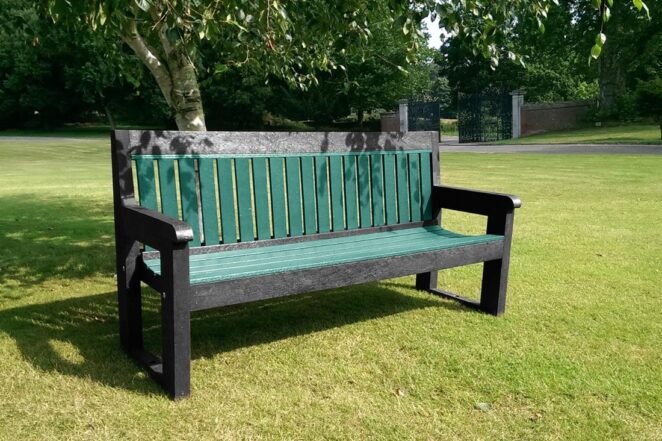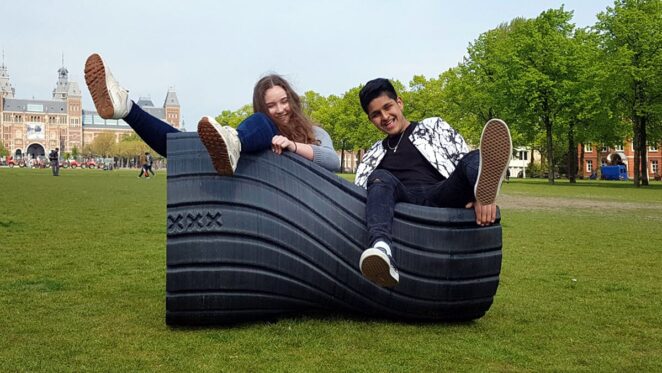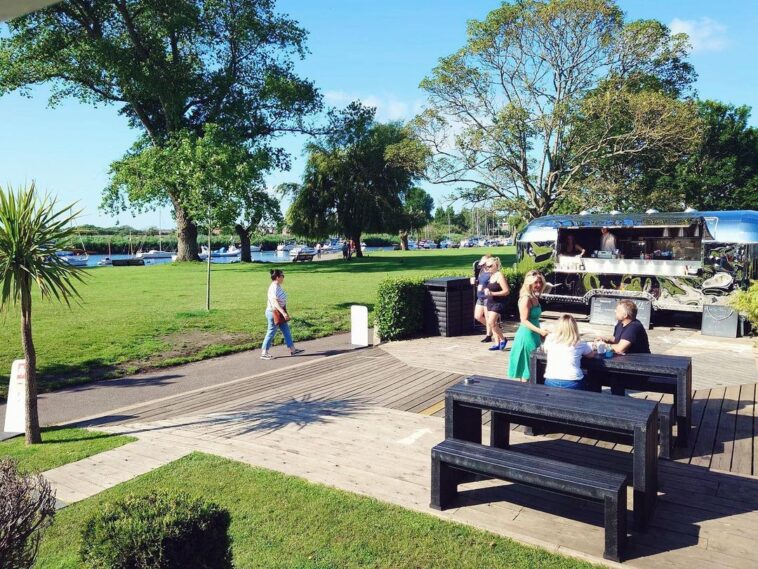Public parks are the beating heart of our communities, offering respite from the urban hustle and bustle and providing a haven for relaxation, recreation, and socialization. As stewards of our environment, we must seek sustainable solutions to furnish these green spaces.
When choosing outdoor furniture to populate these spaces, it can be difficult to find something that withstands the tests of time, whilst still retaining the visual look appropriate to the environment.
Timber furniture is prone to rotting and decomposition, and metal furniture, although long lasting, can appear slightly clinical when paired with the natural world. Enter recycled plastic furniture, a shining example of environmental consciousness with plenty of advantages when used in public parks.
In this article, we explore these benefits in detail, to help highlight why recycled plastic furniture is the perfect choice for populating public parks and other community spaces. Let’s take a look…
Environmental Preservation

The foremost advantage of using recycled plastic furniture in public parks is its significant contribution to environmental preservation.
By utilising post-consumer plastic waste as the primary material, this furniture mitigates the burden on landfills and reduces the demand for virgin, single-use plastic production. It also means it can be reused once the material has reached the end of its natural life.
According to the Environmental Protection Agency (EPA), recycling plastics saves energy and reduces greenhouse gas emissions, thus curbing the adverse impacts of plastic pollution on ecosystems. Make sure to thoroughly research the environmental credentials of your recycled plastic furniture prior to purchasing.
Durability and Longevity
Contrary to misconceptions, recycled plastic furniture boasts remarkable durability and longevity. Engineered to withstand the rigours of outdoor exposure, it is impervious to rot, corrosion, and insect damage.
Unlike traditional wood or metal furnishings, recycled plastic furniture does not succumb to decay, splintering, or rusting over time. Its robust construction ensures years of service, making it a cost-effective investment for public park authorities.
Many recycled plastic furniture providers supply their products with long-term commercial warranties and buy-back schemes, ensuring even greater longevity for their customers.
Low Maintenance Requirements
Maintaining public parks demands considerable resources, from manpower to budget allocations. Recycled plastic furniture alleviates some of this burden by offering minimal maintenance requirements.
Unlike wood, it does not require staining, sealing, or painting to preserve its appearance and structural integrity.
A simple rinse with water and mild soap is sufficient to keep recycled plastic furniture looking pristine, freeing up resources for other essential park maintenance tasks. This is especially beneficial for public park benches and tables, which will experience frequent daily usage.
Versatility in Design and Colour

Gone are the days of monotonous park furnishings. Recycled plastic furniture comes in a myriad of designs, styles, and colours, allowing park planners to inject a sense of personality and vibrancy into public spaces.
Whether it’s sleek modern benches, classic picnic tables, bins, planters, composters, signage, or even playground equipment, recycled plastic can be moulded and crafted to suit any aesthetic preference.
Furthermore, its colour is inherent throughout the material itself, eliminating the need for repainting and ensuring lasting vibrancy under the sun’s harsh rays. Most recycled plastic furniture is UV stable, unlike with timber furniture, which will bleach under sunlight exposure unless chemically treated and stained.
Safety and Comfort
Inclusive design principles underscore the importance of accessibility and comfort in public spaces. Recycled plastic furniture excels in meeting these criteria, offering smooth, splinter-free surfaces that are safe for all park visitors, including children and individuals with mobility challenges.
Additionally, its innate ability to resist extreme temperatures ensures comfortable seating even during sweltering summers or chilly winters, enhancing the overall park experience for visitors of all ages.
Recycled plastic furniture will not splinter, unlike timber or metal furniture which can break apart because of rot or rust, removing another potential hazard for visitors to your space.
Resistance to Vandalism and Theft
Public parks and community spaces are unfortunately susceptible to vandalism and theft, posing challenges for park administrators. Thankfully, recycled plastic furniture presents a formidable solution to these concerns.
Their sturdy construction and inability to be repurposed for resale deter vandals and thieves, contributing to a safer and more secure park environment. Moreover, graffiti and markings can be easily removed from its non-porous surface, maintaining the park’s aesthetic appeal without incurring significant repair costs.
Timber and metal furniture, in contrast, is harder to clean when defaced. Metal especially is a prime target for theft, as it can be sold and reused for scrap.
Promotion of Circular Economy

Embracing recycled plastic furniture in public parks and community spaces aligns with the principles of the circular economy, wherein resources are reused, recycled, and repurposed to minimise waste and maximise resource efficiency.
By choosing furnishings made from recycled materials, park authorities actively participate in closing the loop of plastic consumption, fostering a more sustainable and regenerative approach to urban development.
This not only benefits the environment but also sets a positive example for the community at large.
Educational Opportunities
Public parks often serve as educational hubs, offering opportunities for environmental awareness and stewardship.
Recycled plastic furniture provides a tangible example of sustainable innovation in action, sparking curiosity and dialogue among park visitors.
Interpretive signage highlighting the benefits of recycled materials can further educate the public on the importance of waste reduction and resource conservation, empowering individuals to make informed choices in their own lives.
By using recycled material for further use, you are presenting a shining example to visitors to your space of the practical possibilities of repurposing materials.
In conclusion, the advantages, and benefits of using recycled plastic furniture in public parks are plentiful, ranging from environmental preservation and durability to safety, versatility, resistance to vandalism, and educational value.
As guardians of our green spaces, it is incumbent upon us to embrace sustainable solutions that enhance the beauty, functionality, and longevity of our public parks.
By incorporating recycled plastic furniture, we not only create inviting spaces for recreation and relaxation but also contribute to a healthier, more sustainable future for generations of visitors to come.



